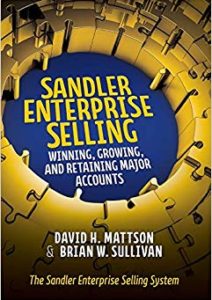As we head towards the finish line of another selling year, we reassess our own selling organization in preparation for 2024. We look at what we do well and not so well to enhance the former and improve the latter. We consider our offerings, our partnerships, and everything that matters in our model to increase our chances of success next year. And, of course, we evaluate our prospects and clients to determine what 2023 changes they’ve experienced and what impacts those changes will have on our ability to win business and serve well. There’s much to cover as we head towards Dec. 31 and by the way, we still have to close the current year effectively by selling strong all the way to the end.
Given all that, I’m afraid I must throw another key element into the task list. We must consider leopards. And most of us don’t know much about them, but there’s one thing we’ve always heard – they never change their spots. Or do they?
In your 2024 preparations, you rightfully focus on your own organization and your clients. It’s natural. But what about your competitors? Of course, you knew them well in the past and you prided yourself on being aware of what to expect from their likely tactics and strategies. But are they acting now in the same way as they did before? Think about it. Are you acting the same way? Of course not. You’ve changed and so have they. And understanding just how they’ve morphed can be the difference between winning or losing in deals against them.
Some foes may have disappeared altogether, casualties of combat. But just as new growth blossoms from a burned forest, fresh competition now grows, fighting tirelessly to defeat you. Whether new faces or enhanced versions of old enemies, it’s your job to understand them comprehensively.
I share an old Indian saying that resonates in today’s dynamic selling climate. “In the dark of the night, every cat’s a leopard”. Tabby or leopard? Cuddler or killer? Important to know? Truth is, it’s a survival skill. As such, you must know and act accordingly. But how can you know? What tools are available to help?
Competitive analysis comes in one of two flavors. There’s the competitive outlook common in business planning, validating an initiative’s viability. It’s interesting but much too broad, providing little help in understanding specific competitors. The other variety includes extensive investigation and data analysis but lacks the focus needed to fortify your pursuits. And even if you had the time for deep dives, much of what you uncover would be completely irrelevant.
So, what to do? How can you point the searchlight into the tall grass to see if you should grab a shotgun or a bag of catnip?
Start with a framework identifying the ten most important areas of competitive focus:
- Facts
- Products/Services
- Performance
- Markets
- People
- Positioning
- Value Proposition/Pricing
- Accounts
- Strengths/Weaknesses
- Plans
The key is to target only information that is relevant to a specific competitor and situation – impactful information. In selling, you must be focused. Climbing through mountains of data is a waste of time. And you can’t dwell on information that’s not on the critical path to success in a deal. Your effort, simply put, must drive wins.
Consider the “People” section in the framework above. Many competitive analysis processes blindly advocate deep dives into organization charts and research into top executives. If high-level executives are truly relevant to your specific deal, absolutely target them. But it’s more likely that other players in competitive organizations will be more impactful. Maybe a sales rep you often face off against or an industry expert with extensive experience in the prospect account’s vertical. If these are the relevant individuals, focus on understanding them and strategizing against them. It’s critical and it may dictate the deal’s outcome. And remember, only you know the players who are most impactful – the rightful targets for your research. Don’t research everyone and certainly not those identified as “important” by boilerplate competitive analyses. And that same relevance mindset applies to the other framework areas as well.
Think about it. Just as with your clients and prospects, you need a laser-focused understanding of how your key competitors have changed. No extraneous information. Only what’s truly impactful and targeted to increase your chances of winning.
The framework’s detail areas cover a broad landscape of the important topics. Some areas are less relevant than others in specific deals. As such, they get less or no focus. Which ones truly matter should be based on your judgment. Don’t allow your reality to be shoehorned into boilerplate templates. That doesn’t work.
After researching the areas that are relevant to a specific competitor and deal, move on to actions. Selling, of course, is about forward motion. No event should represent a snapshot in time as each moment must look ahead. So, you craft five or six actions resulting from your research in the sections. Concrete, date-bound actions, including RACI designations. Then, you act.
Change. You’re focused on it with your prospects and clients. Ignore it with your competitors, though, at your own peril. Understand them as well, but in a pragmatic way to determine what you are now facing. Unlike the leopards, their spots may have changed.











Comments